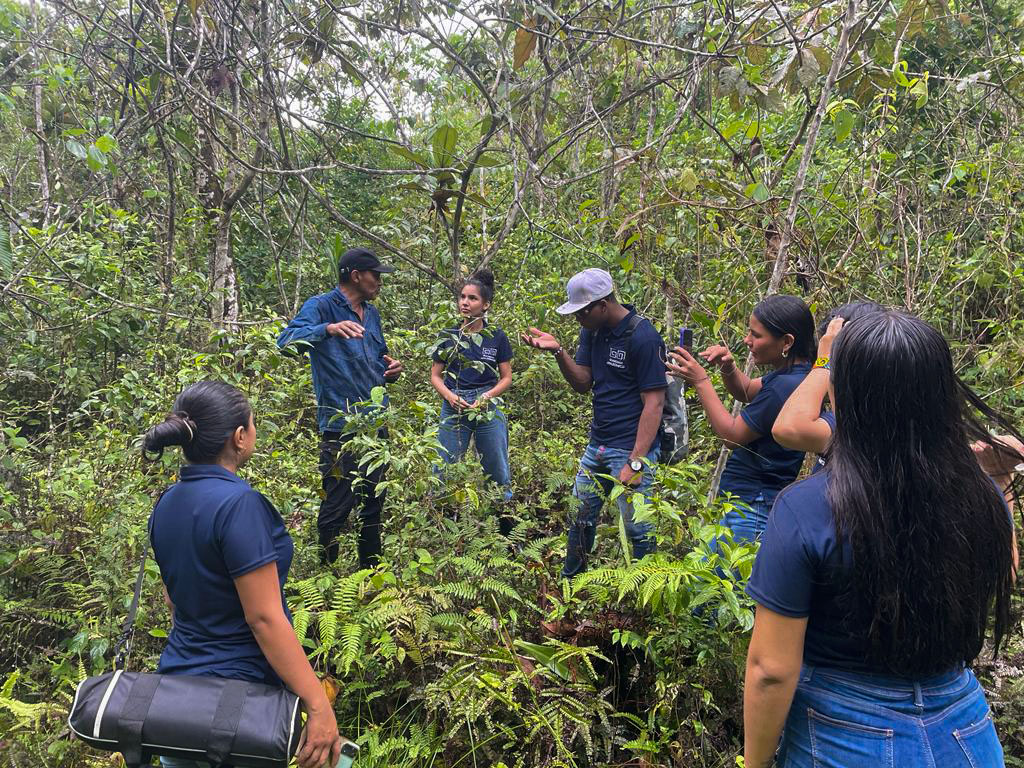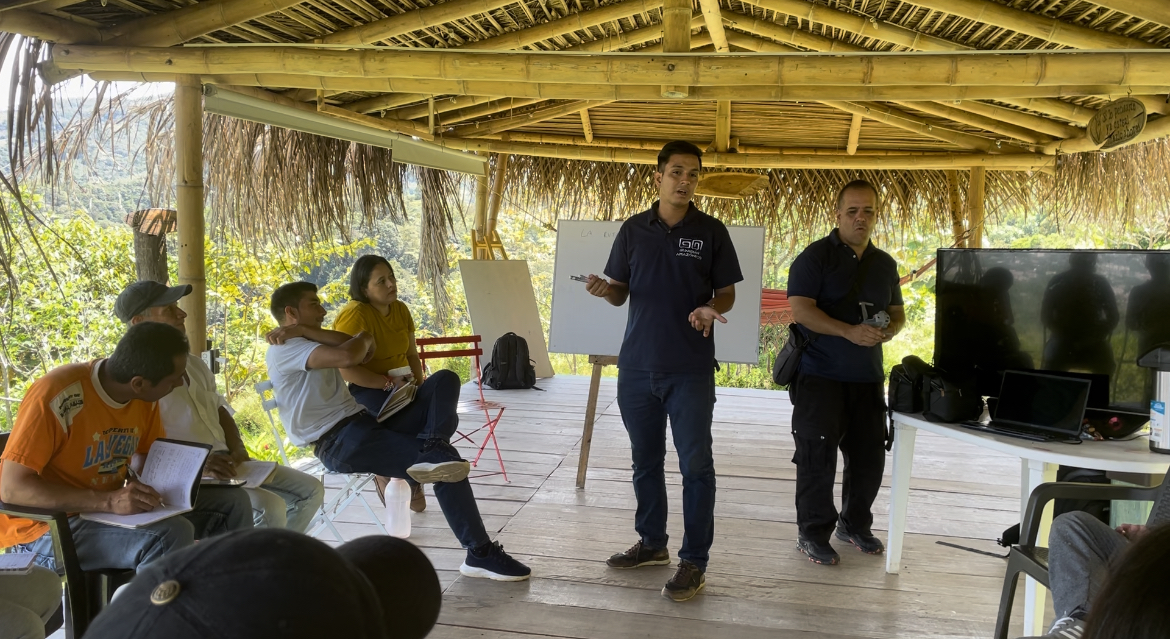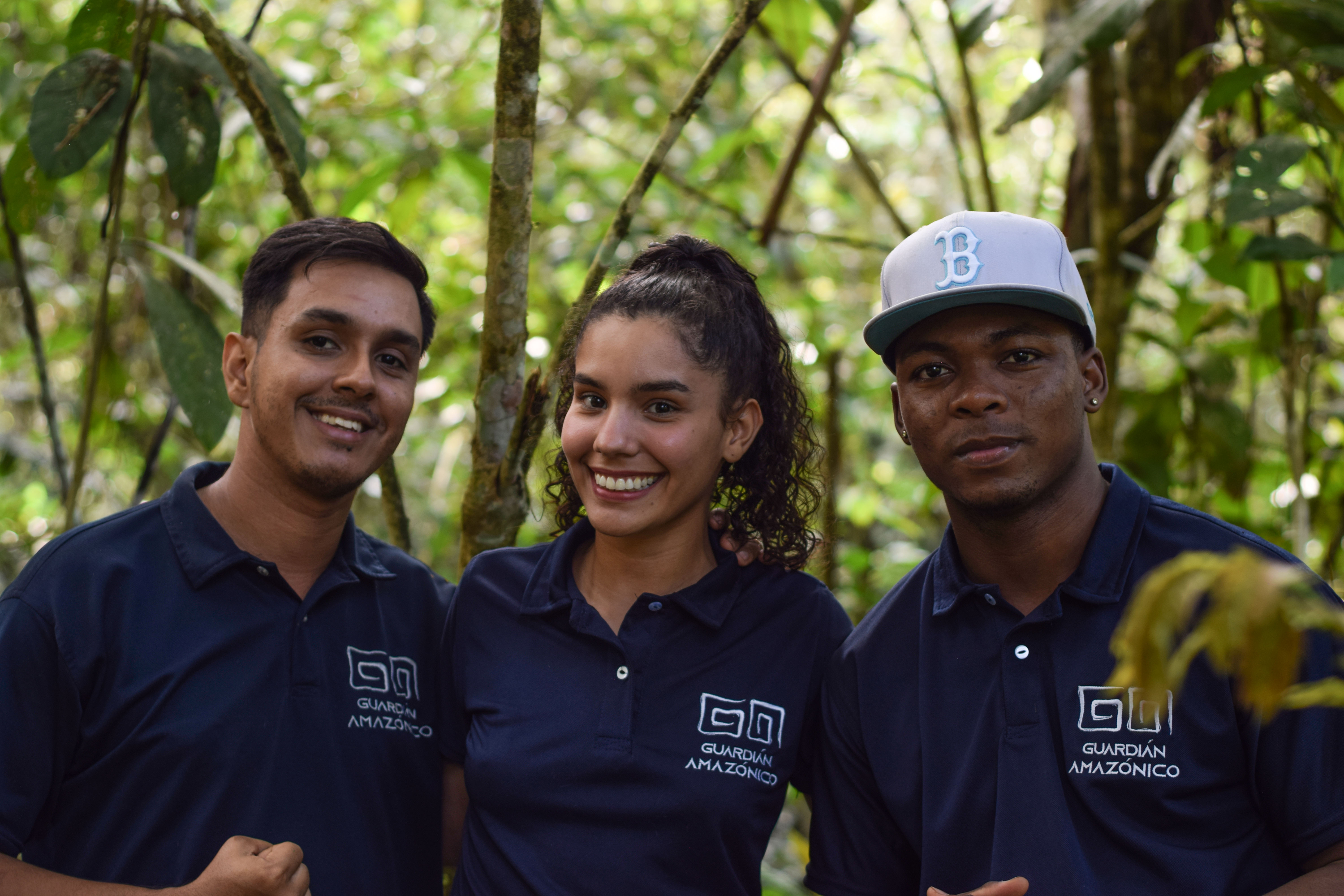The Amazon Guardian bets on nature

When the members of the Guardian Amazon collective from Florencia (Caquetá) went to register their name to create their website, they found that none of the companies that handle this, such as GoDaddy, Namecheap, or HostGator, among others, would accept them. They were almost always told that the name was already registered.
They began investigating and found that there were companies that were trying to trademark names to block their use and that they were even using artificial intelligence to search for and register words associated with their brands.
Fortunately, online names are valid for a certain period of time, and it seems someone forgot to renew their Amazon Guardian registration, and the young people from Caquetá took advantage of the opportunity to do so. But they were once again confronted with problems. They were told that the word "Amazonian" referred to those from a region that spans several countries, and that they couldn't use that name.
The artificial intelligence probably hasn't noticed that in Colombia we call Florencia the Golden Gate of the Amazon. George Tapiero, the group's leader , says that conversation was almost always with an artificial intelligence because the answers to his questions usually came in seconds. "Then I asked why Amazon could register its domain, if it also refers to the Amazon." Fortunately, George de La Selva, as he prefers to be called, is stubborn, and he insisted and insisted until he finally managed to speak with a human being, and that only after research and finding a list of email addresses: "Rebeca was the person's name. She asked us to demonstrate what our work was, and we prepared a nice document, with photos, links, and videos, until they finally gave us the authorization."
George Bezos probably doesn't know that Florence is a Colombian city; he's certainly familiar with the Italian one, because he got married in Venice, nearby. But these young people breathe the Amazonian air 25 hours a day, the city where they were born; it's located in the foothills of the Eastern Cordillera and has the immensity of the Andes in the background and that mythical, deep jungle in front of them, considered the lungs of planet Earth.
In Florencia, young people are aware that nature is perhaps their greatest asset, in part thanks to the work of the nearly 20 young people who make up the Amazon Guardian collective.

In Caquetá, green is one of its main resources. Photo: Personal archive
The story of Guardian Amazonian dates back to 2018, in the Comuneros neighborhood, a sector that was struggling with constant flooding caused by the La Sardina stream.
It was in this context that George Tapiero, an agroecologist from the University of the Amazon (who describes himself as a "talkative and engaging" person), was invited by a president of the community action board to support them in an environmental activity. The initial initiative was not only to plant trees, but also to teach the community about their mechanical function in soil retention and erosion prevention, a perspective that shaped the collective's DNA from the beginning.
This first day of reforestation was carried out voluntarily and not only solved a local problem, but also planted the seed of collective interest and a love of teamwork.
The turning point for Guardian Amazonian came unexpectedly. The collective decided to apply for a call from international cooperation and the Gabriel García Márquez Foundation, which sought to support stories of community resistance within the framework of peace. Against all odds, they won.
The prize: a camera and personalized advice. This recognition launched them into the world of communications. The goal was not only to carry out environmental activities, but to replicate them and inspire more young people to take on the challenge of caring for the river and the environment. Strategic communication proved to be a fundamental tool, not only for dissemination but also for creating inspiring and responsible messages.
Following this achievement, the collective began to formally enter the world of community journalism. A trip to Bogotá for professional support allowed them to "understand many things they weren't aware of," including the need to define a clear line of work to ensure the sustainability of their work.

George Tapiero is the leader of this collective. Photo: Personal archive.
Once strengthened, Guardian Amazónico expanded its reach. They began documenting and sharing the stories of other organizations and communities that were also carrying out positive initiatives in the region. This outreach, always voluntary and free of charge, allowed them to build a vast network of allies.
Another crucial moment in their career was their collaboration with the Agrosol organization of Florencia on the ambitious "Tree Planting for the Amazon." This initiative sought to reforest the Amazon with 30,000 seedlings, and Guardian Amazónico took on a key role: communications. Responsible for creating flyers, videos, campaigns, and event coordination, they demonstrated their ability to mobilize diverse organizations—social, public, and governmental—for a common cause. This experience not only expanded their network of contacts but also earned them recognition and respect in the environmental sector, making them regional leaders in environmental communication.
Professional diversity The strength of this collective also lies in the diversity of its members. Comprised of young people from different professions— psychologists, agroecologists, food engineering students, and social communication students— the collective promotes a common goal: raising awareness of initiatives that resist climate change and contribute to the protection of the Amazon. It has also helped forge professional vocations. One of the members, who was unsure about her future, decided to pursue social communication when she saw the collective's impact.
Little by little, its service offering has expanded. Toy libraries and mini-projects have emerged in Florence that use environmental communication to educate young people, as well as donations of books, clothing, and musical instruments.
The dream now is to create a mini-school for young environmental journalists, leveraging the lessons learned over the years and the teams they've assembled.
Additionally, the collective ventured into social oversight, training as citizen observers. A clear example was their oversight of a health center that had been inactive since its inauguration. Through "responsible cyberactivism" and collaboration with entities such as the Ombudsman's Office and the Attorney General's Office, they succeeded in restoring the center and receiving a multimillion-dollar investment for its renovation and operation.

Amazon Guardian now has its own image and a high level of teamwork awareness. Photo: Personal archive
This experience prompted them to apply for a Ministry of Environment call for environmental oversight, with the goal of monitoring the government's environmental accountability and seeking greater ambition and transparency in development goals.
Tapiero says he's greatly inspired by models like the Tiempo de Juegos Foundation and the Lansuka production company, which promote social change through soccer and sports.
Amazon Guardian is already a benchmark in its department. This year, they were nominated for the Territorial Leaders award, which celebrates the work of individuals and organizations serving the Caquetá community.
The nomination alone was seen as a great achievement by the members of the group, but they weren't optimistic that they would win. So much so that they didn't plan to attend the awards ceremony. "On the day of the awards ceremony, I received a call to confirm my attendance and told them we couldn't go because we had an event, but they insisted so much that they had to tell us we were the winners. We were surprised, because we really didn't do anything to earn the award," Tapiero recalls. And truly, they had nothing to do; the merits lay in their daily work, in their commitment to the region.
In these times of global warming and climate change, the work of groups like Guardian Amazonian becomes a priority, especially in a region like the Golden Gate of the Amazon. Thanks to their professionalism, they have earned the trust of public authorities, the private sector, and international cooperation agencies.
They are aware of the challenges of working in a region severely affected by conflict and take on the risks with the prudence that comes with years and experience. They know how to protect themselves. "We understand the circumstances and we accept them. For example, we know we can't fly a drone in certain areas, which is a shame because sometimes there are waterfalls or natural sites that deserve to be seen, but we have to take precautions." He also acknowledges that their role as nature observers can also be uncomfortable for certain mayors and authorities, but at the end of it all, he feels reassured because so far they have not received any threats for their work.
eltiempo





